|

|
|
|
|
|
|
|
|
Underground
Gate Opener |
 |
Wily was watching the snow come
down when he got a call from a mining company. They needed his help. They had
a section of a deep underground salt mine that was blocked by two swing type security
gates. Vehicle access to the area was tightly controlled. The area did not have any AC
power available for the gates. The mining company had been using a standard driveway
swing gate, controlled by a keypad, powered by a 12v motor and a 12v seal lead acid
battery. However, the batteries had to be replaced periodically and taken up to the
surface to be recharged. Could Wily come up with something, so they would not have
to swap out the batteries? |
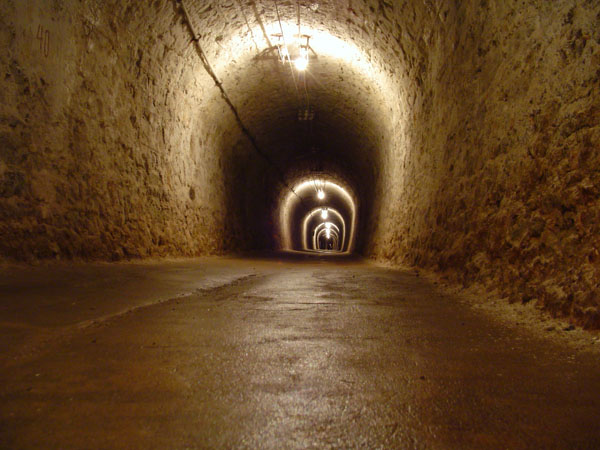 |
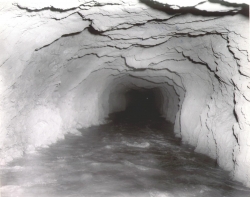 |
| Salt Mine |
Salt
Mine Tunnel |
|
|
The two gates were at opposite ends of
a looping branch tunnel, off the main mine room. The area was used to house special
equipment and materials and was not used very often. The gate mechanisms were
used perhaps only 2 times each month. With each entry into the secure area, one or
the other of the two gates was opened and then closed again within ten minutes.
The gate motion required about 10 seconds to complete and the motor required about 5
Amps of current. Illumination in the area was provided by the vehicle lights and
from the minerís own head lamps. Being underground, there was no sunlight and
the temperature was a constant 55 degrees. This didnít sound good to Wily.
What energy source could he tap into to keep the batteries charged? |
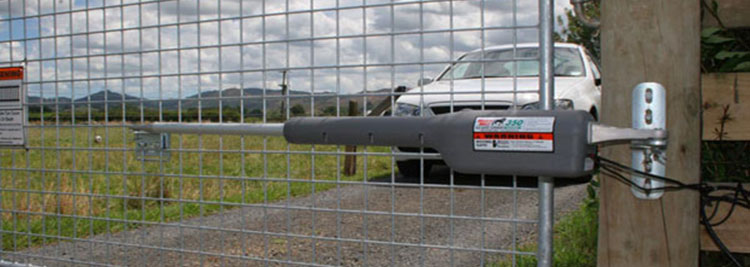 |
Wily thought for a minute.
He then asked if there was ventilation in the tunnel. There was. In
fact, the air moved through the narrow tunnel at about 7 miles per hour.
Bingo! Wily had the solution. Wily agreed to take on the
project.
With the constant movement of
air through the secure tunnel, Wily figured he could get the company to
install a small wind generator next to each gate. Wily knew that the
relationship between air speed and power tracked a cube function. If a
small wind generator was rated at 100 watts with a 35 MPH wind, then at 7 MPH
there might be about a watt of power to harvest. |
|
Motorized Swing Gate |
|
|
That should be more than enough to
keep the battery charged. Unlike above ground applications, the wind in the
mine would be constant 24/7. Even if the generator was listed at producing 100
watts at 50MPH, it should crank out 0.3 watts at 7MPH. That should still be
enough. |
| Wily did a quick reality check.
A typical lead acid battery will self discharge. Wily estimated that a
fresh battery might be dead in about one year. If the battery had a 10
Amp-hour capacity and died in one year or about 9,000 hours, then the
discharge rate was roughly 1 millamp. Assuming about 48 gate movements per
year, 24 openings and 24 closures, lasting 10 seconds and drawing 5 Amps, the
total current was about 0.7 Amp-hours. So, it seemed that the self
discharge curve of the battery was really the driving force. Even a
current of only 10 milliamps or about 0.14 watts should be enough to keep the
batterycharged. Wily worked with the
mining company and together they decided on a suitable wind generator.
But, the low wind speed could mean that the voltage from the wind generator
might be slightly lower than the 14v needed to keep the battery charged.
Wilyís solution was to add a voltage doubler boost circuit to the three phase
rectifier inside the generator. Unlike above ground conditions, the generator
would never see high wind conditions so there would not be any danger in a
fast spinning generator. |
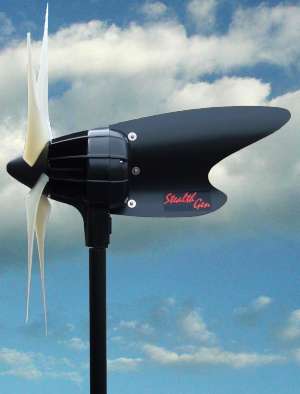 |
| |
Small Wind
Generator |
|
| The complete generator
circuit is shown below. The circuit provides a fixed 14v supply, current
limited to 100ma. |
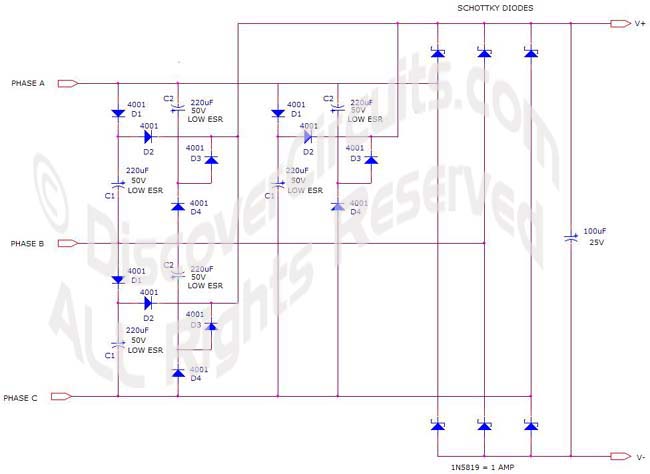 |
| |
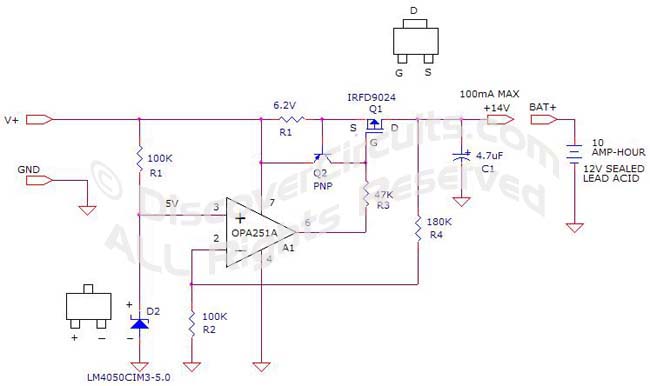 |
|
|
|
|
|
|